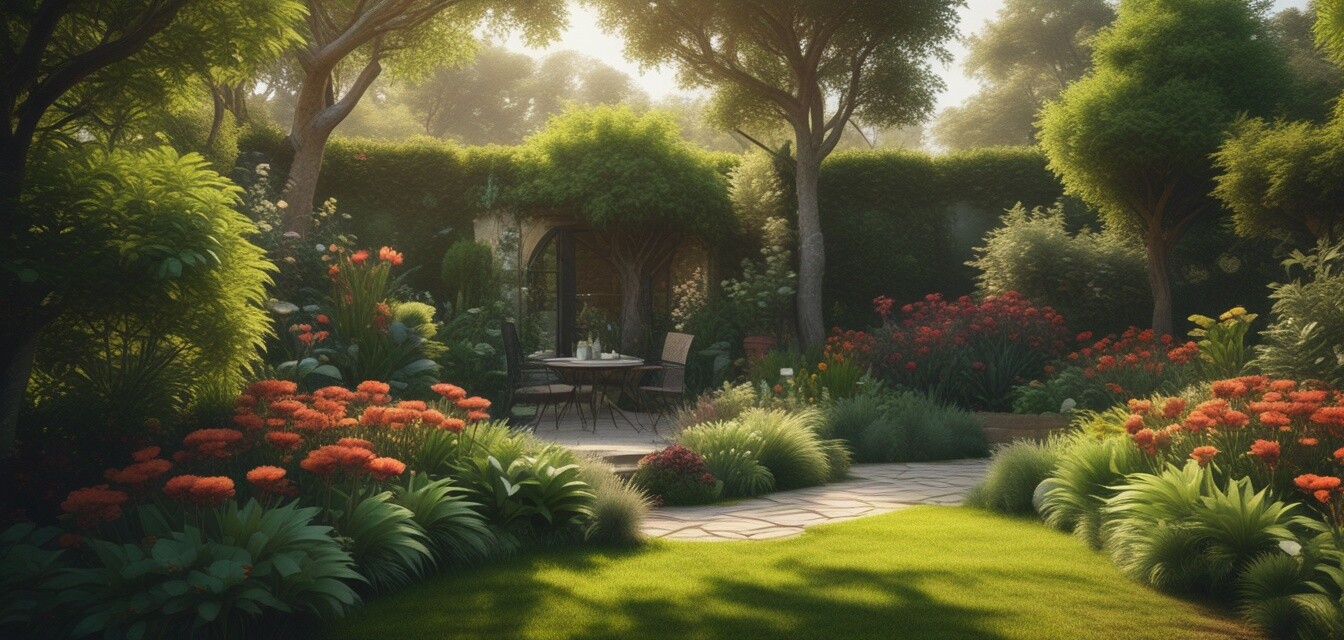
Gardening trends inspired by nature
Key Takeaways
- Nature-inspired gardening emphasizes biodiversity and sustainability.
- Incorporating natural elements helps create a harmonious garden design.
- Trends like permaculture, native plants, and wildlife gardens promote ecological balance.
- Utilizing biodegradable materials and sustainable practices ensure long-term garden health.
Gardening is an art that reflects the beauty of the natural world. As we continue to explore eco-friendly practices, many garden enthusiasts are looking to nature for inspiration. In this article, we will explore several gardening trends influenced by natural ecosystems and provide insights on incorporating them into your own backyard designs.
1. Biodiversity and mixed plantings
One of the top trends in gardening today is the promotion of biodiversity. This involves planting a mix of species to create a balanced ecosystem. By creating a diverse planting palette, you can attract a variety of wildlife, including pollinators, birds, and beneficial insects.
| Plant Type | Benefits |
|---|---|
| Native Plants | Adapted to local conditions; support local wildlife. |
| Herbs | Provide culinary uses and attract beneficial insects. |
| Flowering Plants | Attract pollinators like bees and butterflies. |
| Ground Covers | Prevent erosion and suppress weeds. |
Getting started with mixed plantings
- Research native plants in your area.
- Choose a variety of plants that bloom at different times.
- Group plants together based on their water and sunlight needs.
- Regularly monitor and maintain your garden to ensure plant health and diversity.
2. Permaculture principles
Permaculture is a design philosophy that relies on observing natural ecosystems to create sustainable gardening practices. This trend focuses on energy efficiency, maximizing productivity, and harmonizing with nature.
Tips for incorporating permaculture
- Design your garden layout to follow natural patterns and contours.
- Implement companion planting to enhance growth.
- Utilize rainwater harvesting and other sustainable practices.
3. Wildlife friendly gardens
Creating a garden that invites wildlife is both fulfilling and beneficial. By including elements like birdhouses, bee hotels, and water features, you can support local ecosystems.
| Wildlife Feature | Benefits |
|---|---|
| Birdhouses | Encourage bird populations; natural pest control. |
| Bee Hotels | Support pollinator health; increase crop yields. |
| Water Features | Provide hydration; attract various wildlife. |
Steps to create a wildlife friendly garden
- Reduce chemical use to create a safe environment.
- Plant a variety of flowers for a continuous bloom.
- Provide shelter through dense vegetation or brush piles.
4. Use of natural materials
An emerging trend in gardening is the shift towards using natural, biodegradable materials. This not only reduces waste but also enhances the aesthetic appeal of the garden.
Natural materials to consider
- Wooden garden beds
- Stone pathways
- Natural mulches like straw or bark
- Biodegradable pots for seedlings
Pros
- Enhances garden aesthetics with organic looks.
- Supports sustainability efforts.
- Reduces reliance on plastic materials.
Cons
- Natural materials may require more maintenance.
- There could be higher initial costs.
5. Vertical gardening
Vertical gardens are a great way to maximize space and embrace the natural verticality found in ecosystems. This method is perfect for small yards or urban settings where horizontal space is limited.
| Vertical Garden Type | Advantages |
|---|---|
| Living Walls | Beautiful and functional; improves air quality. |
| Vertical Planters | Space-saving; perfect for herbs and flowers. |
How to create a vertical garden?
- Select a wall or structure that receives enough sunlight.
- Choose appropriate plants that thrive in vertical conditions.
- Ensure you have a sturdy support system for your plants.
Conclusion
As gardening continues to evolve, drawing inspiration from nature provides a powerful way to create beautiful and sustainable outdoor spaces. By engaging with trends such as biodiversity, permaculture, wildlife-friendly practices, the use of natural materials, and vertical gardening, you can cultivate a garden that not only flourishes but also becomes a part of the natural ecosystem. Explore our resources on garden inspiration and learn about eco-friendly fertilizers ideal for supporting your nature-inspired design. Stay connected with these trends as they continue to shape the future of gardening.